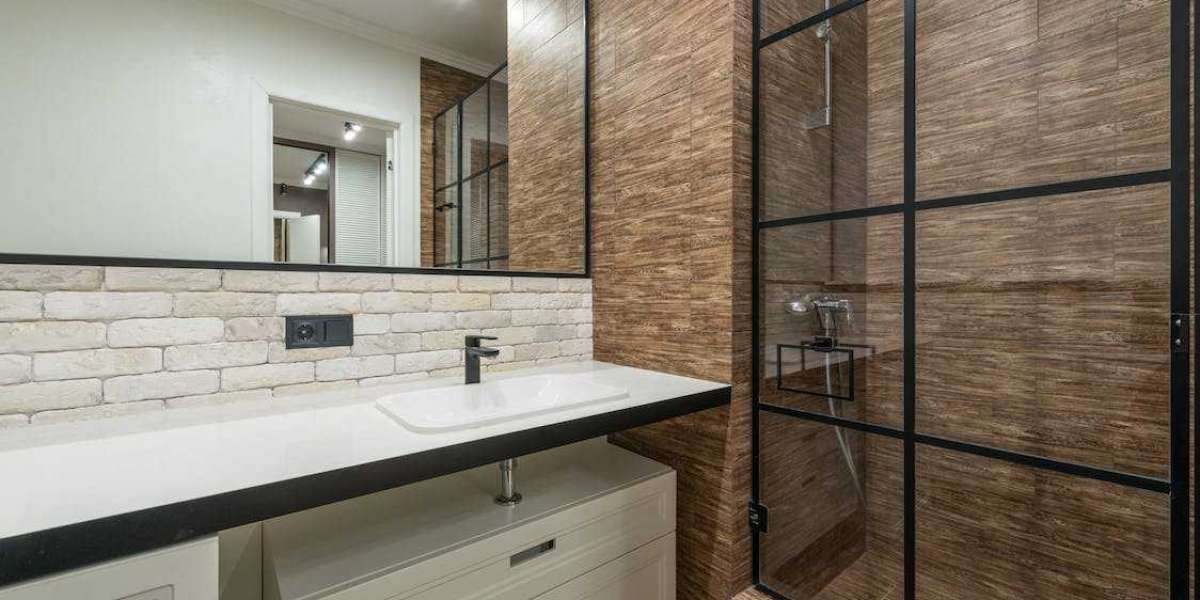Bathrooms are spaces where everyone's needs should be met, regardless of age or physical ability. The importance of accessibility in bathroom design cannot be overstated. It's not just a matter of complying with regulations but creating spaces that enhance the daily lives of individuals with diverse needs.
Understanding Diverse Needs
Catering to individuals with mobility challenges
One of the primary considerations in accessible bathroom design is accommodating individuals with mobility challenges. This involves thoughtful space planning to ensure easy navigation and the inclusion of features like grab bars and ramps.
Addressing the needs of elderly users
As people age, their mobility may decrease, making standard bathroom features challenging to use. Designing bathrooms with the elderly in mind involves selecting fixtures and features that provide stability and ease of use.
Considering the requirements of children
Children have unique needs that should be considered in bathroom design. From adjustable sink heights to easy-to-reach storage, creating an inclusive space for the little ones is an integral part of accessible design.
Regulations and Guidelines
Overview of relevant accessibility standards
Before delving into the specifics of bathroom design, it's crucial to understand the regulations and guidelines that govern accessibility. Familiarity with standards such as those set by the Americans with Disabilities Act (ADA) lays the foundation for creating truly accessible spaces.
Compliance with ADA guidelines
The ADA provides comprehensive guidelines for accessible bathroom design. From the height of fixtures to the clear floor space required for wheelchair users, adherence to these guidelines ensures compliance with legal standards.
Incorporating universal design principles
Going beyond compliance, universal design principles emphasize creating spaces that are accessible to everyone, regardless of their physical abilities. This involves thoughtful design that considers the needs of a wide range of users.
Wheelchair-Friendly Design
Proper space planning for wheelchair maneuverability
Creating a bathroom that accommodates wheelchair users starts with space planning. Ensuring there's enough room for a wheelchair to navigate comfortably is fundamental to accessibility.
Accessible sinks, toilets, and showers for wheelchair users
Choosing fixtures that are accessible to individuals in wheelchairs is crucial. This includes sinks with knee clearance, toilets with appropriate height, and roll-in showers.
The importance of grab bars and handrails
Installing grab bars and handrails strategically in the bathroom enhances safety and support for individuals with mobility challenges. These features should be sturdy and well-placed for maximum effectiveness.
Visual and Tactile Elements
Importance of good lighting in an accessible bathroom
Good lighting is essential in any space, but it holds particular significance in an accessible bathroom. Proper illumination enhances visibility, benefiting individuals with visual impairments.
Contrast and color considerations for visually impaired individuals
Choosing colors and contrasts thoughtfully is crucial for those with visual impairments. High-contrast elements and clear color distinctions aid in navigation and use.
Incorporating tactile indicators for those with visual and cognitive impairments
Tactile indicators, such as textured tiles or braille labels, provide valuable information for individuals with visual or cognitive impairments. These small details contribute to a more inclusive environment.
Non-Slip Flooring and Surfaces
Choosing slip-resistant materials for bathroom floors
Wet bathroom floors can be hazardous, especially for individuals with mobility challenges. Selecting slip-resistant flooring materials is a proactive step in ensuring safety.
Ensuring safety in wet conditions
Beyond materials, proper drainage and design considerations can prevent water accumulation, reducing the risk of slips and falls in wet conditions.
Textured surfaces for added grip
Incorporating textures in key areas, like shower floors and bath mats, provides additional grip for users. These subtle details significantly contribute to the overall safety of the bathroom.
Adjustable Fixtures and Features
Adaptable bathroom fixtures for varying needs
The needs of bathroom users can vary greatly. Designing bathrooms with adaptable fixtures allows for customization based on individual requirements.
Incorporating adjustable-height sinks and mirrors
Adjustable-height sinks and mirrors cater to users of different heights and mobility levels, providing a comfortable and personalized experience.
Customizable features for personal preferences
From adjustable showerheads to customizable storage solutions, incorporating features that align with personal preferences enhances the overall functionality and satisfaction of the bathroom.
Technology in Accessibility
Smart solutions for an accessible bathroom
Advancements in technology have paved the way for smart solutions in accessible bathroom design. These may include voice-activated controls, motion sensors, and other high-tech features.
Integration of assistive technologies
Assistive technologies, such as electronic faucets and automated lighting, contribute to a more user-friendly bathroom experience for individuals with diverse needs.
High-tech features for convenience and safety
From temperature-controlled water to smart toilets with various functionalities, high-tech features can elevate the accessibility and comfort levels of a bathroom.
Budget-Friendly Accessibility
Affordable modifications for accessibility
Creating an accessible bathroom doesn't always require a hefty budget. Simple modifications and thoughtful choices can make a significant impact without breaking the bank.
DIY tips for making bathrooms more accessible
For those on a budget, do-it-yourself (DIY) projects offer a cost-effective way to enhance accessibility. These may include installing grab bars or adding non-slip treatments to existing surfaces.
Resources for financial assistance
Several organizations offer financial assistance or grants to individuals looking to make their bathrooms more accessible. Exploring these resources can provide valuable support.
Trending Designs in Accessible Bathrooms
Modern and stylish accessible bathroom ideas
Accessibility doesn't mean compromising on style. Explore modern and stylish designs that seamlessly integrate accessibility features into the overall aesthetic.
Blending aesthetics with functionality
Achieving a balance between aesthetics and functionality is key. Trending designs focus on creating visually appealing bathrooms that prioritize accessibility.
Creative ways to make accessibility fashionable
From chic grab bar designs to innovative storage solutions, discover creative and fashionable ways to make your accessible bathroom a design statement.
Environmental Considerations
Sustainable and eco-friendly options for accessible bathrooms
Incorporating environmentally friendly elements in bathroom design aligns with the broader trend of sustainable living. Explore eco-friendly materials and water-saving fixtures for an accessible yet green bathroom.
Green design principles in bathroom accessibility
Applying green design principles involves selecting materials and products that have a minimal environmental impact. This conscious approach contributes to a healthier planet while creating an accessible bathroom.
Case Studies
Showcase of successful accessible bathroom designs
Real-life examples provide inspiration and practical insights into creating accessible bathrooms. Explore case studies of successfully executed projects that prioritize inclusivity.
Real-life examples of improved accessibility
Learn from real-world examples of how accessibility modifications have positively impacted the lives of individuals. These stories highlight the transformative power of thoughtful design.
Hiring Professionals for Accessibility Projects
The role of architects and designers in creating accessible bathrooms
Architects and designers play a crucial role in translating accessibility concepts into tangible designs. Hiring professionals with experience in accessible design ensures a well-executed project. If you're looking to delve deeper into the significance of accessible design and how it can elevate your project, click this site.
Collaborating with contractors experienced in accessibility projects
Working with contractors experienced in accessibility projects is equally important. Their expertise can streamline the construction process and result in a more effective and compliant accessible bathroom.
DIY Accessibility Projects
Empowering individuals to make simple accessibility changes
Not all accessibility improvements require professional intervention. Empower individuals with simple DIY projects that enhance the functionality of their bathrooms.
Step-by-step guide for common DIY projects
From installing handrails to adjusting the height of fixtures, provide a step-by-step guide for common DIY accessibility projects. Detailed instructions make these improvements accessible to a wider audience.
Conclusion
In conclusion, creating an accessible bathroom is an investment in inclusivity and comfort. Whether you're considering small DIY changes or embarking on a major renovation, prioritizing accessibility benefits everyone. A bathroom that caters to diverse needs is a bathroom that truly serves its purpose.



